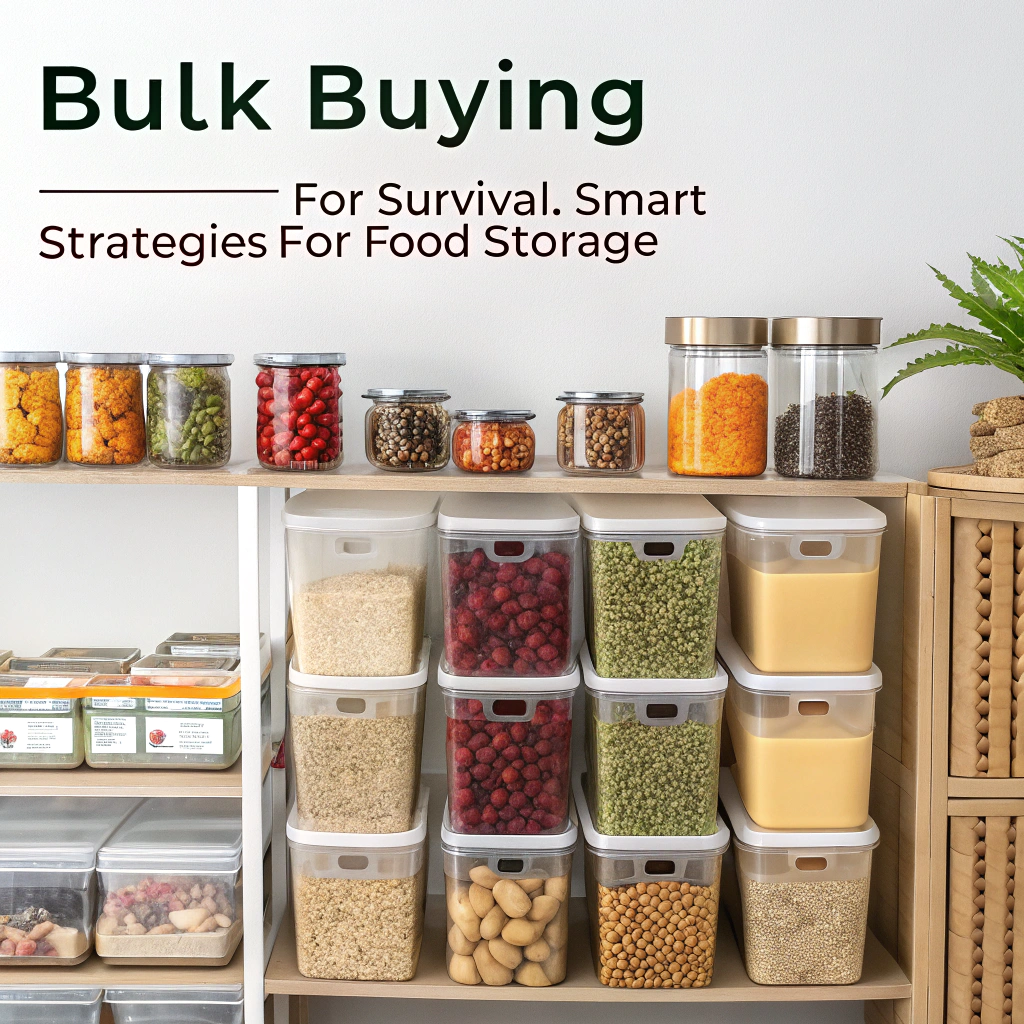
In an unpredictable world, the ability to secure food supplies can be a game-changer. Whether it’s due to natural disasters, economic downturns, or personal emergencies, having a well-stocked pantry can provide peace of mind and security. This article will explore the smart strategies for bulk buying and food storage, ensuring you are prepared for any situation that may arise.
Why This Topic Is Worth Reading
Understanding the art of bulk buying and food storage is essential for anyone looking to enhance their self-sufficiency. In today’s fast-paced world, food prices can fluctuate dramatically, and supply chains can be disrupted. By learning how to buy in bulk, you can save money, reduce waste, and ensure you have access to nutritious food when you need it most.
Moreover, bulk buying is not just about stocking up; it’s about making informed choices. This article will guide you through the best practices for selecting, storing, and utilizing bulk food items effectively. You’ll learn how to create a sustainable food storage system that meets your family’s needs.
Finally, this knowledge empowers you to take control of your food supply, making you less reliant on grocery stores and more resilient in the face of challenges. With the right strategies, you can turn bulk buying into a practical and rewarding endeavor.
Key Highlights or Must-Know Points
- Understanding the benefits of bulk buying.
- Identifying the best foods for long-term storage.
- Learning effective storage techniques to maximize shelf life.
- Creating a budget and shopping list for bulk purchases.
Smart Strategies for Bulk Buying and Food Storage
1. Assess Your Needs
Before diving into bulk buying, evaluate your household’s food consumption patterns. Consider factors such as dietary preferences, family size, and storage capacity. This assessment will help you determine which items to buy in bulk and how much to purchase.
2. Choose the Right Foods
Not all foods are suitable for bulk buying. Focus on non-perishable items that have a long shelf life. Some excellent choices include:
- Grains: Rice, oats, and pasta are versatile staples.
- Canned Goods: Vegetables, fruits, and proteins like beans and tuna.
- Dried Foods: Lentils, nuts, and dehydrated fruits.
- Frozen Foods: Vegetables and meats can be bought in bulk and stored in a freezer.
3. Create a Budget and Shopping List
Bulk buying can lead to significant savings, but it’s essential to stick to a budget. Create a shopping list based on your needs assessment and prioritize items that offer the best value. Look for sales, discounts, and bulk pricing options at local stores or wholesale clubs.
4. Proper Storage Techniques
Once you’ve purchased your bulk items, proper storage is crucial to maintain freshness and prevent spoilage. Here are some effective storage techniques:
- Use Airtight Containers: Store grains, nuts, and dried foods in airtight containers to keep moisture and pests out.
- Label Everything: Clearly label containers with the contents and purchase date to keep track of freshness.
- Store in a Cool, Dark Place: A pantry or basement is ideal for maintaining optimal conditions for food storage.
5. Rotate Your Stock
To ensure that you use your bulk items before they expire, practice the “first in, first out” method. Place newer items behind older ones to encourage using the older stock first. This practice minimizes waste and keeps your food supply fresh.
Extra Tips, Notes, or Warnings
- Start Small: If you’re new to bulk buying, start with a few items to gauge your storage capabilities and consumption rates.
- Be Mindful of Expiration Dates: Always check expiration dates when purchasing bulk items to avoid spoilage.
- Consider Your Space: Ensure you have adequate storage space before buying in bulk to avoid clutter and waste.
Common Questions Answered
1. How much should I buy in bulk?
The amount you should buy depends on your household size and consumption patterns. Start with a few weeks’ worth of supplies and adjust as needed.
2. Can I freeze bulk items?
Yes, many bulk items, such as grains and meats, can be frozen to extend their shelf life. Just ensure they are properly packaged to prevent freezer burn.
3. What are the best places to buy in bulk?
Wholesale clubs, local co-ops, and online retailers often offer bulk purchasing options. Compare prices to find the best deals.
4. How do I know if food is still good to eat?
Check for signs of spoilage, such as off smells, discoloration, or mold. When in doubt, it’s better to err on the side of caution and discard questionable items.
Final Thoughts
Bulk buying for survival is not just a practical approach to food storage; it’s a lifestyle choice that promotes self-sufficiency and preparedness. By implementing smart strategies for bulk buying and food storage, you can ensure that you and your family are well-equipped to handle any situation that may arise. Remember, the key is to plan, choose wisely, and store effectively.
Get Involved
We encourage you to start your bulk buying journey today! Share your experiences, tips, or questions in the comments below. Your insights could help others in their quest for food security. Together, we can build a community of informed and prepared individuals ready to face whatever challenges come our way.
Leave a Reply